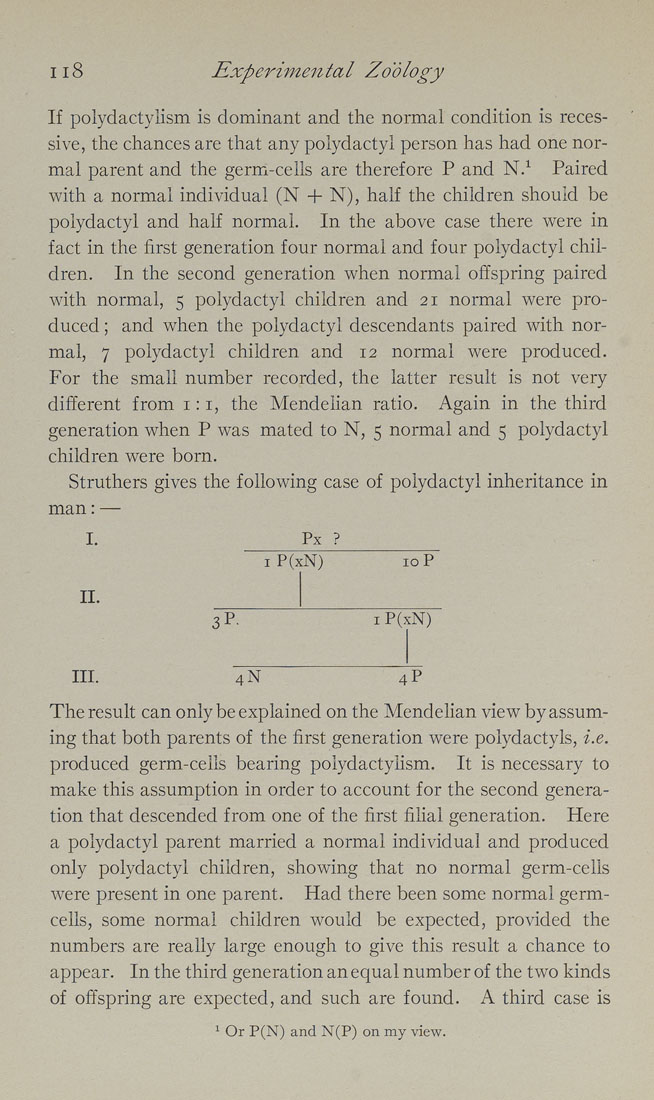Ii8 Experimental Zo'dlogy
If polydactylism is dominant and the normal condition is reces¬
sive, the chances are that any polydactyl person has had one nor¬
mal parent and the germi-cells are therefore P and N.^ Paired
with a normal individual (N -f N), half the children should be
polydactyl and half normal. In the above case there were in
fact in the first generation four normal and four polydactyl chil¬
dren. In the second generation when normal offspring paired
with normal, 5 polydactyl children and 21 normal were pro¬
duced ; and when the polydactyl descendants paired with nor¬
mal, 7 polydactyl children and 12 normal were produced.
For the small number recorded, the latter result is not very
different from 1:1, the Mendefian ratio. Again in the third
generation when P was mated to N, 5 normal and 5 polydactyl
children were born.
Struthers gives the following case of polydactyl inheritance in
man: —
I. Px ?
I P(xN) loP
II. ________\______________
3 P. iP(xN)
III. 7N ~4P
The result can only be explained on the Mendelian view by assum¬
ing that both parents of the first generation were polydactyls, i.e.
produced germ-cells bearing polydactyfism. It is necessary to
make this assumption in order to account for the second genera¬
tion that descended from one of the first filial generation. Here
a polydactyl parent married a normal individual and produced
only polydactyl children, showing that no normal germ-cells
were present in one parent. Had there been some normal germ-
cells, some normal children would be expected, provided the
numbers are really large enough to give this result a chance to
appear. In the third generation an equal number of the two kinds
of offspring are expected, and such are found. A third case is
^ Or P(N) and N(P) on my view.
|








